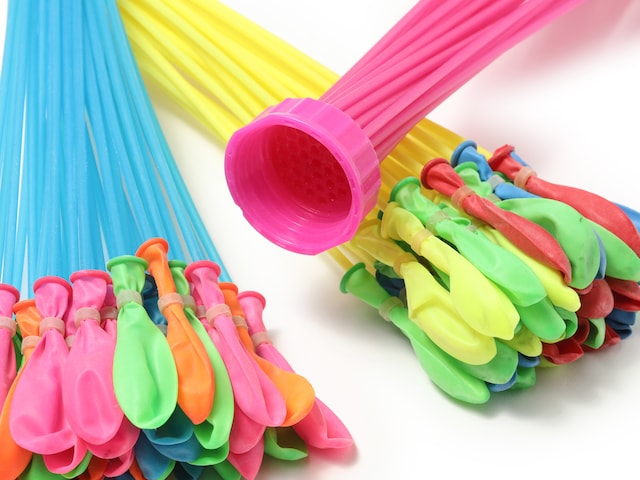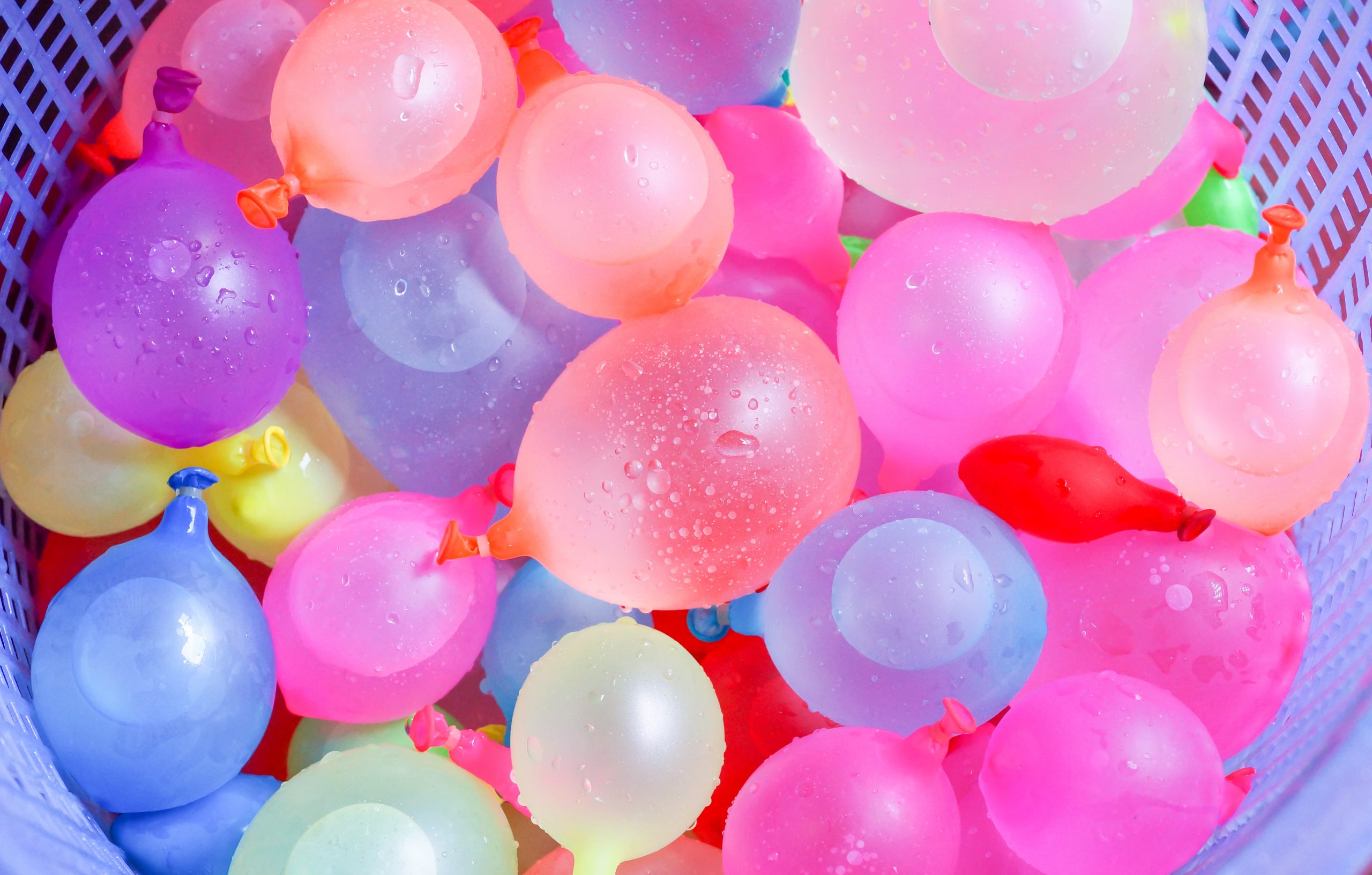Introduction
Are Water Balloons Biodegradable – Water balloons are a popular choice for outdoor water games, summer parties, and various recreational activities. While they offer endless fun and entertainment, it’s essential to consider their impact on the environment. One important question that arises is: Are water balloons biodegradable? Understanding the environmental implications of water balloons and their biodegradability is crucial in making responsible choices and minimizing our ecological footprint.

In this article, we will explore the biodegradability of water balloons and their environmental impact. We will delve into the materials commonly used to make water balloons, their decomposition process, and the potential consequences when they end up in the environment. Additionally, we will discuss alternatives and eco-friendly options available to reduce the environmental impact of water balloons.
By gaining a deeper understanding of the biodegradability of water balloons, we can make informed decisions that align with our commitment to sustainability and environmental conservation.
It’s important to note that the biodegradability of water balloons can vary based on the specific brand, material, and production methods. Therefore, it is crucial to refer to the product labeling or contact the manufacturer for accurate information regarding the biodegradability of specific water balloon products.
How long does it take a water balloon to decompose?
They take 3–4 months to disintegrate completely, depending on whether they fall on land or in water. For example, if they fall into the sea, they can take more than a year to decompose, becoming a significant hazard to the environment and animal life.
The decomposition time of a water balloon depends on various factors, including the materials used to make the balloon and the environmental conditions in which it is exposed. Generally, traditional latex water balloons can take several months to a few years to decompose fully.
Latex, the common material used in water balloons, is derived from natural rubber. It is biodegradable and breaks down over time when exposed to sunlight, heat, and microbial activity in the environment. The decomposition process involves the gradual breakdown of the latex molecules into smaller components until they are fully assimilated into the ecosystem.
However, it is important to note that decomposition times can be significantly influenced by factors such as the thickness of the balloon, exposure to UV radiation, temperature, humidity, and the presence of microorganisms. Balloons that end up in bodies of water or landfills may take longer to decompose due to the lack of sunlight and oxygen necessary for efficient breakdown.
To minimize the environmental impact of water balloons, it is advisable to use biodegradable alternatives or reusable water balloon substitutes made from sustainable materials. These options offer shorter decomposition times or eliminate the need for disposal altogether, reducing waste and environmental pollution.
Are bubble balloons biodegradable?
Latex balloons are made from the sap of rubber trees – a completely natural substance. Q. Are the balloons biodegradable? Foil and bubble balloons are not biodegradable.
Bubble balloons, also known as plastic bubble balloons or orbz balloons, are made from a different material compared to traditional latex balloons. They are typically made from a type of plastic called polyethylene terephthalate (PET). Unlike latex balloons, bubble balloons are not biodegradable.

PET is a durable and long-lasting plastic that does not readily break down in the environment. When bubble balloons are released or improperly disposed of, they can persist in the environment for an extended period. They can contribute to plastic pollution and pose risks to wildlife and ecosystems.
It is important to handle and dispose of bubble balloons responsibly to minimize their environmental impact. Whenever possible, opt for biodegradable alternatives or consider using other types of balloons that are made from more environmentally friendly materials.
Reducing the use of plastic balloons overall, reusing them whenever possible, and recycling them appropriately can help mitigate the environmental consequences associated with non-biodegradable balloon materials like bubble balloons.
Are balloons environmentally friendly?
According to the University of Michigan, a balloon can travel thousands of miles and then end up polluting the ecosystem where it lands. Balloons can be especially harmful to birds and marine life, such as fish and turtles, who can mistake the balloon debris for food and get entangled in ribbons.
Balloons, particularly those made from latex, are considered more environmentally friendly compared to balloons made from plastic materials. Latex balloons are derived from natural rubber and are biodegradable. They break down over time when exposed to sunlight, heat, and microbial activity, minimizing their impact on the environment.
However, it is important to note that proper disposal and responsible use are crucial for minimizing the environmental impact of balloons. When released into the environment, balloons can become litter and pose risks to wildlife, marine life, and ecosystems. It is recommended to always dispose of balloons properly in designated waste bins.
Additionally, balloons made from plastic materials, such as bubble balloons or foil balloons, are not environmentally friendly. These materials take a long time to break down, contributing to plastic pollution and harming ecosystems.
To make balloon use more environmentally friendly, consider alternatives such as reusable balloon substitutes made from fabric or other sustainable materials. These options reduce waste and can be used multiple times, minimizing the need for single-use balloons.
Ultimately, practicing responsible use, choosing biodegradable options, and properly disposing of balloons can help minimize their environmental impact and contribute to a more sustainable approach to celebration and decoration.
Are plastic balloons biodegradable?
Though not biodegradable, some cities accept them into citywide recycling programs. These balloons can also be inflated, deflated, and reused! Remember, the most important thing when using helium-filled foil or stretchy balloons is to weight them!
Plastic balloons, such as those made from materials like Mylar or foil, are not biodegradable. These balloons are typically composed of a type of plastic called polyethylene terephthalate (PET) or metalized nylon. Unlike latex balloons, plastic balloons do not break down naturally in the environment.
When plastic balloons are released or improperly disposed of, they can persist in the environment for a significant amount of time. This can contribute to plastic pollution, harming wildlife, marine life, and ecosystems.
It is crucial to handle plastic balloons responsibly and dispose of them properly in designated waste bins. Recycling programs for plastic balloons may exist in some areas, so it is worth checking local recycling guidelines.
To reduce the environmental impact associated with plastic balloons, consider alternatives. Opt for biodegradable balloons made from natural latex, or explore other eco-friendly decorations such as reusable fabric balloons or paper decorations. By making more sustainable choices, we can help minimize plastic pollution and protect our environment.
Are water balloons rubber or plastic?
Water balloons, like air balloons, are generally made from latex, which naturally decomposes. While there still could be some environmental impact if burst water balloons are left behind in the wild where animals might ingest them, that impact would be low.
Water balloons are typically made from rubber, specifically natural latex rubber. Latex is a milky sap that is obtained from rubber trees. It is a flexible and stretchable material, making it ideal for creating water balloons that can expand and hold water.
Natural latex rubber is biodegradable and breaks down over time when exposed to sunlight, heat, and microbial activity in the environment. This means that water balloons made from natural latex are more environmentally friendly compared to balloons made from plastic materials.

However, it’s important to note that there are also water balloons available that are made from plastic materials such as polyethylene. These plastic water balloons are typically marketed as single-use and not biodegradable. They do not decompose like natural latex rubber and can contribute to plastic pollution if not disposed of properly.
Are there specific factors that can affect the biodegradation time of water balloons?
Yes, several factors can influence the biodegradation time of water balloons. Some key factors include:
Material Composition: The type of material used to make the water balloon plays a significant role. Natural latex rubber balloons, which are biodegradable, break down more quickly compared to plastic-based balloons.
Environmental Conditions: Environmental factors such as temperature, humidity, and sunlight exposure can impact the decomposition process. Warmer temperatures and higher levels of sunlight can accelerate the biodegradation of latex balloons.
Thickness and Size: Thicker and larger balloons may take longer to decompose compared to thinner and smaller balloons. This is because thicker balloons contain more material that needs to break down.
Microbial Activity: Microorganisms present in the environment play a crucial role in breaking down biodegradable materials. The presence of microorganisms and their activity levels can vary, affecting the biodegradation process.
Disposal Method: Proper disposal methods can influence the biodegradation time. Balloons that are disposed of in designated composting facilities or recycling programs specifically designed for biodegradable materials can decompose more efficiently.
It’s important to note that while these factors can affect biodegradation time, it is always recommended to dispose of balloons responsibly to minimize their environmental impact.
Are there any alternatives to traditional water balloons that are more environmentally friendly?
Yes, there are several alternatives to traditional water balloons that are more environmentally friendly. Here are a few options:
Biodegradable Water Balloons: Look for water balloons specifically labeled as biodegradable. These balloons are typically made from natural latex rubber and break down more quickly in the environment compared to plastic-based balloons.
Reusable Water Balloon Substitutes: Consider using reusable alternatives to traditional water balloons. These can be made from materials such as fabric or sponge-like materials that can be soaked in water and reused multiple times. They eliminate the need for single-use balloons and reduce waste.
Water Spray Bottles: Instead of using balloons, opt for water spray bottles or water guns for water-based outdoor activities. These alternatives can still provide fun and refreshing play without generating balloon waste.
Water Games with Sponges or Soaker Toys: Engage in water games that utilize sponges or soaker toys instead of balloons. Sponges can be soaked in water and tossed or squeezed, providing a similar experience to water balloon play.
Water Play with Natural Elements: Embrace water play with natural elements like buckets, water fountains, or sprinklers. These options do not generate waste and allow for enjoyable water activities.
By choosing these alternatives, we can reduce the environmental impact associated with single-use water balloons and promote more sustainable options for water-based fun.
What can individuals do to minimize the environmental impact of using water balloons?
To minimize the environmental impact of using water balloons, individuals can take the following steps:
Opt for Biodegradable Balloons: Choose water balloons specifically labeled as biodegradable and made from natural latex rubber. These balloons break down more easily in the environment, reducing their long-term impact.
Limit Balloon Use: Use water balloons sparingly and only when necessary. Avoid excessive use or wasteful practices that generate unnecessary balloon waste.
Proper Disposal: Dispose of used water balloons responsibly. Pop and deflate the balloons, and dispose of them in designated waste bins. Avoid releasing balloons into the environment, as they can contribute to litter and harm wildlife.
Choose Reusable Alternatives: Consider using reusable water balloon substitutes made from fabric or sponge-like materials. These alternatives can be soaked in water and reused multiple times, reducing the need for single-use balloons.
Educate and Raise Awareness: Spread awareness about the environmental impact of water balloons and encourage others to make more sustainable choices. Share information on biodegradable options and alternative water-based activities that are eco-friendly.
Water Conservation: Be mindful of water usage when filling water balloons. Avoid wasting water and use only what is necessary for the activity. Consider using buckets or other water-saving methods for water play.
Clean-Up Responsibility: After using water balloons, ensure proper clean-up of any balloon remnants. Pick up and dispose of any balloon pieces or litter associated with the activity to prevent environmental pollution.
By implementing these practices, individuals can enjoy water balloon activities while minimizing their impact on the environment and promoting more sustainable choices.
Conclusion
The biodegradability of water balloons depends on the materials they are made of and the specific brand or product. While some water balloons are marketed as biodegradable or made from biodegradable materials, others may contain non-biodegradable components that can persist in the environment for a long time.
It is essential to make informed choices when using water balloons to minimize their environmental impact. Proper disposal and responsible use are key. If you choose to use water balloons, consider opting for brands or products that are explicitly labeled as biodegradable and made from environmentally friendly materials.
However, the most sustainable approach is to explore alternative options for water-based outdoor activities. There are eco-friendly alternatives available, such as reusable water balloon substitutes made from fabric or sponge-like materials that can be soaked in water and reused multiple times.
Additionally, focusing on water conservation and reducing waste is crucial. Using water responsibly, avoiding excessive balloon waste, and cleaning up after outdoor activities can help minimize the impact on the environment.
By being conscious of the environmental implications and seeking out sustainable alternatives, we can still enjoy the fun and excitement of water-based activities while minimizing harm to our planet. Let’s strive for eco-friendly choices and encourage others to do the same, creating a more sustainable future for generations to come.


